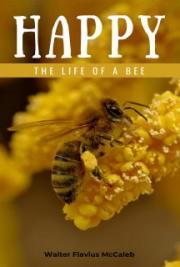Hog-dog rodeos have been around for a few decades, occurring primarily in the American South and to a lesser extent the Midwest, and also Arizona. Signs advertising an event are often placed on trees in dirt roads. Rural areas are the usual designated locales where these events occur. Unfortunately it's all too common for local authorities to look the other way, or to not enforce the law as it should be.
"Five states have laws on the books that explicitly make hog-dog rodeos illegal: Alabama, Florida, Louisiana, Mississippi, North Carolina, and South Carolina.
Unfortunately, these laws are often loosely interpreted by local authorities and rarely enforced." (Peta.org: Hog-Dog Rodeos)
"The HSUS believes that hog dog fights regularly occur in at least ten states: Alabama, Arizona, Arkansas, Florida, Georgia, Louisiana, Mississippi, Oklahoma, South Carolina, and Texas; {Other sources include Arizona}" (December 2, 2004; Humane Society.org: Hog-Dog Fights: Blood JSport' Packaged as Family Entertainment)
Hogs endure horrible injuries including partially ripped or completely ripped off ears, mutilated or ripped out genitals, very painful gaping wounds wherein the bleeding further strengthens the dogs' killing frenzy and other injuries that can be inflicted by teeth and claws.
Even the bears in bear baiting blood-sport have a better chance to defend themselves they're quite large and can grapple. Not so for the defenceless hogs.
Supporters consider hog-dog rodeos as wholesome southern style fun. So much so, children often accompany adults to these events. Sometimes after fights, children are encouraged to gang up on and chase the terrified hogs. The children are being taught something quite devious here.
According to Ann Chynoweth, director of The HSUS's Animal Cruelty and Fighting campaign, "Hog dog fighting is even more inexcusable because it is staged animal fighting billed as family entertainment. Attend almost any hog dog event, and you'll see mothers and children in the audience, cheering on the attacking dogs and their trainers ... But family entertainment shouldn't include the intentional torture and injury of defenceless animals." (December 2, 2004; Humane Society.org: Hog-Dog Fights: Blood JSport' Packaged as Family Entertainment)
Let us not forget the dogs, they're forced to live a life without the love, empathy, and care that companion animals are supposed to receive. Their owners DO NOT love or even care about them. In fact, these dogs are a tool to make money and to have fun, at their expense of course.
What happens to these dogs if by chance they're seriously injured in a fight, or if they become too old or sick to fight anymore? They're not adoptable in the normal sense. Sending them to an animal shelter may bring about strong suspicions; they're fighting dogs and as such may exhibit violent or unpredictable behaviours.
In January of 2015 nearly 60 dogs most of which were Dogo Argentinos, predominately between 4 months of age to young teens, were rescued from a Cottonwood, Alabama residence. The dogs were allegedly used in a breeding operation used for hog- dog fights, according to the HSUS. The dogs were emaciated and suffered from skin infections requiring urgent medical care.
Thankfully, most of the dogs were taken to a temporary shelter, away from the horrors of their previous days.
"The cruelty these dogs were shown is painful to see, and we couldn't stand by and allow them to suffer," said Col. Jim Smith, public safety director for the town of Cottonwood. (By Erin Edgemon, Updated January 14, 2015; Al.com: 60 Dogs Rescued from Suspected Breeding Operation for Hog-Dog Fighting in Cottonwood)
Dogo Argentinos are very tough, often used in dog fighting, but can also be used to attack and fight wild animals. Not surprisingly authorities also found drugs and weapons on the property.
"These dogs are lucky that the authorities responded quickly to this situation ... With the recent cold temperatures and the dogs' poor condition, they needed immediate attention. We are glad to have been called in to assist in this case, and we will continue to be part of the investigation and prosecution process," said Chris Schindler, Manager of Animal Fighting Investigations for the HSUS. (ibid)
In December of 2004, authorities with the aid of the HSUS inflicted a severe punishment on the putrid hog-dog fighting enterprise, arresting 7 leading fight promoters in Alabama, Arizona, and South Carolina, and more arrests appeared to be on their way. The arrests were a severe warning to other people involved in this enterprise. Thankfully, the American public has become more aware of the cruelty and brutality of hog-dog rodeos, and their tolerance towards it, even in states where it's practiced is waning.
Authorities believe that the 7 persons arrested may have close links to the International Catchdog Association (ICA). This organization is stationed in South Carolina and is suspected of organizing, certifying, and filming hog-dog rodeos. "Making use of strong federal and state prohibitions on such conduct, law enforcement agents arrested leaders of this clandestine network {ICA}, dealing a major blow to this despicable industry," noted Wayne Pacelle, CEO and president of The HSUS. (By Nuria Querol i Vinas, Updated December 26, 2004; Gevha.com: Multi-State Bust Sends a Powerful Message to Hog Dog Operators)
The South Carolina arrests included hog-dog rodeo chieftains Arthur Parker Sr., 47, and his wife, Mary Evans Luther, 50, alleged president and secretary of ICA, and Arthur Parker Jr., their 20 year-old son. Maximum penalty for an animal cruelty charge is a 5 year incarceration and a $5000 fine. Being a spectator at an event is a misdemeanour level crime wherein the maximum penalty is a 6 month jail term and a $500 fine for the first offense. The 3 arrestees were later released on bond.
Authorities discovered nearly 100 dogs in the woods near the suspects' trailer home, wherein, most were staked to the ground with metal spikes, no freedom to move around. More so, they were fully exposed to the cold, the luckier dogs were able to take shelter inside a barrel or a box. Food was either miniscule or not available their water had frozen from the cold weather. But considering how this enterprise works the hogs always have the worst fate.
"If the dogs had it bad, the 15 pigs found on the property lived in hell. Once wild, the bulky, near gray-black creatures were now the walking wounded. One was missing an ear. Another's mouth was so badly mutilated that food spilled out whenever it attempted to eat ... {a number of them were tusk-less} ... Confined to cramped pens, the traumatized hogs huddled together and moved as if by one terrified instinct. Such was life for creatures repeatedly attacked by dogs for the enjoyment of audiences and for the profit of those who promote these spectacles." (ibid)
Hatred, cruelty, and brutality towards animals can be enticed and encouraged by cultural or religious beliefs.
Unfortunately, some species of animals have been demonized with incredible ferocity, blamed for things they had nothing to do with and branded as evil, associated with heresies, are in cooperation with the devil and witches. Cats have been both demonized and loved throughout the ages, at times even worshipped by ancient Egyptians.
In 1180, according to Walter Map, "The Devil descends as a black cat before his devotees. The worshippers put out the light and draw near to the place where they saw their master. They feel after him and when they have found him they kiss him under the tail." (Heretical Cats: Animal Symbolism in Religious Discourse by Irina Metzler via Medievalist.com: Why Cats Were Hated in Medieval Europe, October 2, 2013)
Although most of us would never dream of burning a live cat in a fire or pyre, this was routinely done in France until the late 18th century. Shockingly, it was considered a form of entertainment, funny, and amusing. There were no tears shed for the helpless victims. Broadly speaking, the reign of terror against cats in Europe began sometime in the 9th century lasting until the 18th century. To say that tens of thousands of cats were subjected to repression during this period would be an understatement; the number was likely considerably higher.
One of the methods of cat burning involved the stuffing of cats into a sack or net and then heaving the bunch high above a specially prepared pyre. During this era cats were perceived as being evil, agents of the devil; friends of witches, thereby negating any empathy for the shrieking, howling, crying cats.
Every June 24, what is called by many in the western world as Saint John the Baptist Day was once a Day of Horror for cats. Part of the celebrations involved the making of multiple pyres to burn bags containing cats. Cats could also be hanged from a rope above a pyre. Burning at the stake was also practiced. A weekly cat burning in France was referred to as Cat Wednesday.
The cat chasers of Saint Chamond enjoyed running after a burning cat. In areas of Burgundy and Lorraine cat tormentors danced any which way around a flaming pole that a cat was strapped to.
Although cats were known to kill mice and small rats, as far as cat haters were concerned this was an incidental role. Cats, unlike dogs could not be subdued or trained they often hunted at night, and performed loud raucous-like mating rituals. Furthermore, cats' mice catching abilities were commonly compared with how the Devil snatched peoples' souls. There was no way out of it, the demonization was fully ingrained.
The Catholic clergy conveniently accused 'heretical sects' of worshipping cats. The 13th century was one of the worst for women accused of being witches and for cats too. Horrific tortures were meted out upon both. The 16th and 17th centuries were also a terrifying period for cats in Europe, wherein it's estimated that well over 100 thousand cats were killed in Germany and France alone; but the number could be significantly higher. Taking into consideration the fact that there was no spaying or neutering of cats, colonies could abound, and there were no animal protection organizations to speak of.
Black cats were the prime target, especially when they were owned by a woman, in particular a single elderly woman. The uglier the woman the easier it was to accuse her and her cat of being evil. The Celts had a ludicrous belief, whereby a cat was previously a human but she was punished for her sins. Punished by whom?
The fact that cats have their own personalities, do much of their hunting during the night, and were easy to handle, they became a good scapegoat, blamed for much sin, evil, and were the object of curses.
The most personal cat-directed hatred which is observed annually is that of Halloween. Originally a new-year's festival for the Celts, it gradually metamorphosed into the annual October 31 Halloween day. It was believed that persons who had died would somehow return to our planet, their souls residing in animals. The unlucky animal of choice was the black cat.
Extreme fears and prejudices towards black cats have continued to this day. One ridiculous belief is that if a black cat crosses your path it will bring forth bad luck.
Not surprisingly, many shelters across the U.S. don't allow for the adoptions of black cats beginning shortly before Halloween until afterwards. Put simply and bluntly, it's more than likely that some black cats that are adopted during this period will end up in the hands of sadistic lunatics, cultists, and Satanists who will inflict unbelievable harm upon their victims. In my opinion, no shelter in North America should allow any black cat adoptions during this critical period, and also Friday the 13th. A black cat is literally defenceless against its tormentors; the tormentors can do whatever they please to their victims. Catching the perpetrators in the act is almost impossible.
"There are satanic sacrificial rituals that still exist in our country and around the world," says Karen Buchan, community projects manager for Palm Beach Animal Care and Control. (By Jane A. Kelly, October 19, 2010; Catster.com: Halloween Danger for Black Cats: Fact or Fiction)
Unfortunately, any cat of any colour can also be tormented for ritual or personal reasons, and it need not be on Halloween. Satanic rituals may be another danger point. However, unlike
Halloween wherein the day is widely known and never changes, Satanists who adopt cats for ritual purposes will not come out and say so. It must be noted that evidence regarding Satanists torturing black cats for ritual purposes is often, but not always second hand.
Torturing cats is always wrong regardless of the reasoning. A thorough screening process, educating the public and animal lovers willing to report suspected animal abusers are essential. Some shelters with a keen eye have noticed that black cat adoptions increase shortly before Halloween, but are returned shortly after Halloween. Excuses are many, but it's logical to say that at least some of these black cats were used for Halloween. What's more, a black cat is a black cat, and so is a cat of another colour. A targeted cat can be snatched from the street or from someone's yard. If you're a cat owner please be careful before Halloween until the days afterwards, keep your cats at home or in a safe place, better yet keep an eye on them or have a reliable person do so. If someone does snatch your cat during this critical period and there are no witnesses thereabouts, I wish you the best of luck finding your loved one. Remember, cats are small, and unless a cat runs away or is ferocious, it can easily be carried off, or taken to a vehicle and then it's over.
In December of 2013 Santa Fe, Texas Police raided a home suspected of containing illegal drugs. They found crystal methamphetamine and articles needed to help weigh and sell the drugs. Unfortunately, they found something else, something quite heartbreaking.
The home of 39 year-old Brian Cheek and Veronica Singer, his 38 year-old wife, contained 20 dead cats ranging in age from kittens-to-adults. The police claimed that every single dead cat appeared to have been tortured while alive. The torture took the form of beatings, gutting, strangulation, and burning. Police intended to have each of the dead cats examined by necropsy in order to obtain definitive proof regarding the cats' causes of death.
Initially, Cheek and Springer were charged with drug- related offenses. However, felony animal cruelty charges were likely in the making.
In October of 2014 a gruesome discovery was made close to a
South Jersey Elementary School. According to investigators a cat and a litter of kittens were set on fire while still alive.
The dead cats were discovered by a teacher at Washington
Avenue Elementary School in Pleasantville, New Jersey. Although police could not yet pinpoint the exact time or day of death, a stench in the area had been noticed by school staff for an entire week, and no doubt students too. At the time of the investigation school officials were studying a surveillance camera close to the burning, hoping that the attack was recorded.
"Staff had been reporting the smell for a week ... They assumed it was the dumpsters," said Pleasantville Police
Patrolman Rob D'Arcangelo. (By David Chang, Updated October 22, 2014; NBC Philadelphia.com: Cat, Kittens Burned to Death Outside South Jersey Elementary School)
A teacher made it quite clear that this act of cruelty should not be associated with their school.
"We don't want people associating animal cruelty with the
school ... I can tell you the teachers in this school donate a lot of money to animal shelters and things like that," said Tim Newkirk, a teacher at Washington Avenue Elementary School. (ibid)
But in 2013 a dog that was burned to death was found in the same area. That case has yet to be solved. It's possible that both cases are related. But even if they are it doesn't prove that the gruesome killings were committed by a student. It could've been a person/s who lives in the area, or a deranged passerby.
We should be weary when someone commits an act of brutality and sadism against innocent animals. Many serial killers/rapists began their criminal careers by tormenting and/or killing animals. There are no intermediary creatures or beings between animals and humans that we can see and feel. We humans are one step up in the ladder above animals. When a child or teen commits heinous acts against defenceless animals it must be considered a giant red flag. Additional animals may also be harmed and killed. Worse yet, the child could grow up to harm humans.
In September of 2014 a Jacksonville, Florida 14 year-old teen was discovered carrying a bag inside of which were 2 crippled cats, while being questioned by a police officer about a particular burglary.
The 14 year-old had killed 6 cats and was ready to kill more, according to police. One of the cats, named Camus, was burned to death outside a home on West 9th Street in Springfield. Worse yet, not only did the teen appear to be callous about what he'd done, but glossed over his actions.
Regarding Camus, the teen told the police officer that "UHe tied the string around the cat's neck and sprayed lighter fluid all over the cat (the report said) ... He lit the cat on fire. He said that the cat was engulfed in flames and tried to run away." (By Dan Scanlan, Updated October 1, 2014; Jacksonville.com: 'It is Nothing to Kill a Cat': Jacksonville Teen Tortured, Killed 6 Cats, Planned to Kill 2 More, Police Say)
In the arrest report regarding the 2 cats in his bag, the 14 year-old said that he stomped on their legs and was on his way to kill them, following the previous killing of 2 other cats, and had drowned 3 others in the past.
The 14 year-old also said that he "likes to kill animals when he is mad, including dogs and cats ... Killing a cat is like killing a sheet of paper ... It is nothing to kill a cat." (ibid)
Initially, a reward had been offered for information leading to Camus' killer, donation money was sent to a giveforward.com website. On a positive note, the reward money will be donated to the Springfield Animal Care and Rescue Club in memory of Camus and the other cats that were harmed and killed at the hands of the 14 year-old. Thankfully, the 2 seriously injured cats were under a veterinarian's care.
"And we sincerely hope that he gets the mental health counselling that he obviously needs ... Hug your pets tight, and rest a little easier knowing that he can't hurt them anymore," said Adam Arendell from giveforward.com website. (ibid)
Arendell was reassured that the 14 year-old was arrested and that he would be off the streets for a while.
In July of 2013 a 5 week-old black and white kitten later named Justin sustained horrible 2nd and 3rd degree burns on his back and head after being doused with gasoline and then set alight by heartless thugs. Justin survived but sustained permanent bald spots and lost both ears. In all certainty,
Justin suffered incredible mental anguish during the dousing, and because of the severity of the act will never forget the ordeal.
Thankfully, passerby Damaris Alcala saw what ensued. He rushed to Justin, who was on the street and then smothered the flames with his jacket. Shockingly, this was yet another in a series of horrible attacks against innocent animals in New Jersey, U.S.A.
"He was already crying when I picked him up but when I moved him in the back he started screaming," said Alcala. (By Daily Mail Reporter, Updated July 29, 2014; Daily Mail.co.uk: From Fireball to Fur Ball: Adorable Kitten that Survived in Petrol and Set Alight Finds a New Home After Making Miraculous Recovery)
Justin was promptly taken to the Animal Alliance charity wherein he received round-the-clock care by specialists.
Justin's story became widely known throughout the world, attracting the attention of millions of people online; many people wanted to help Justin in any way they could.
"After Justin's shocking ordeal he was brought to us in such a horrendous way ... But after a lot of love and care he improved bit by bit and we took him home to help look after him ..." said Kelly Vanasse, of Animal







